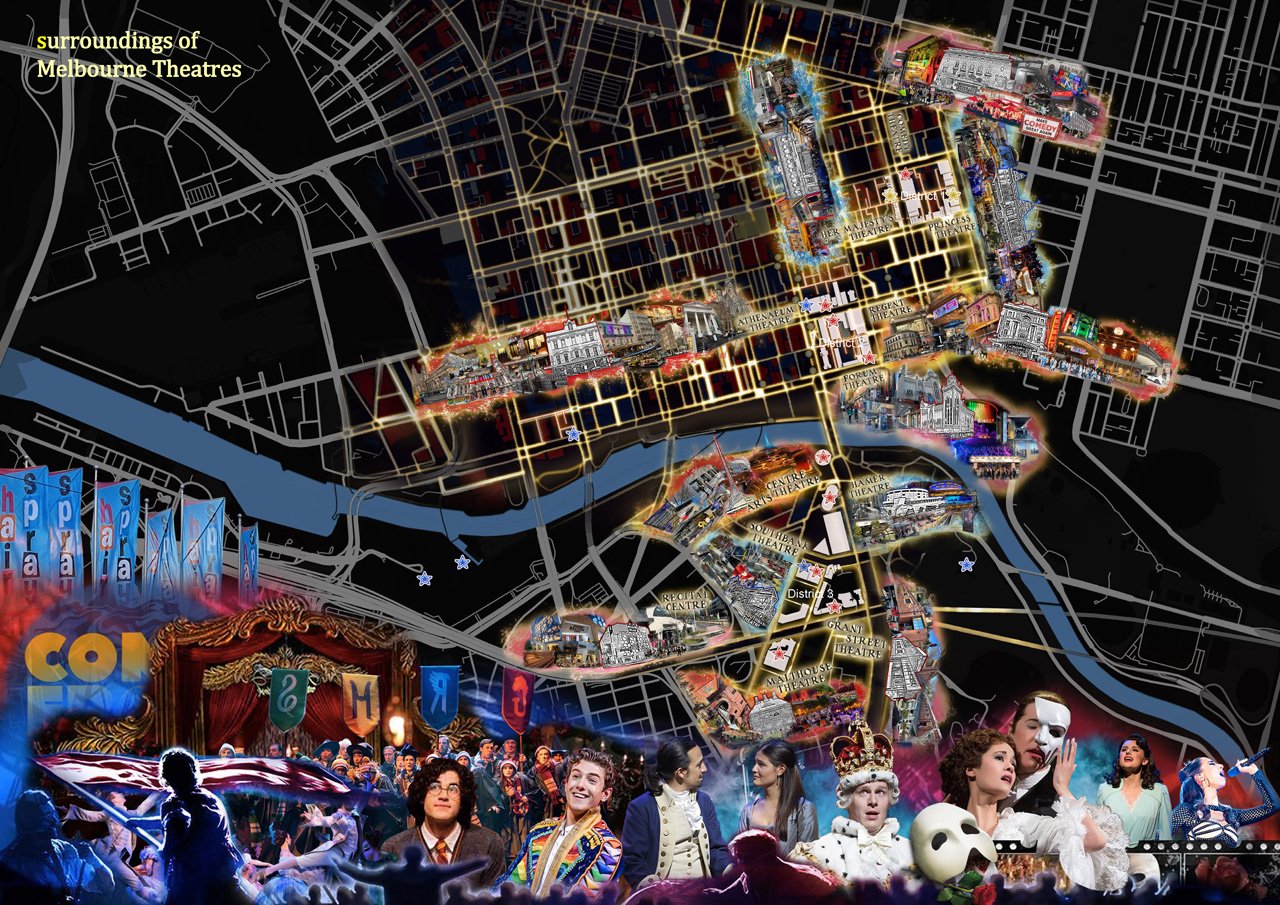Hybrid Mapping Seminars
MLA Design Research Seminar
Seminar Leader: Maud Cassaignau
2021-22
Urban areas are predominantly planned through clearly delineated and zoned planning maps, simulating a neat juxtaposition of different functional areas: from residential and business areas, parks to infrastructures. Derived from a modernistic understanding originating in the CIAM conferences on the city, the neat subdivision of urban systems is a conceptual model of the past. The contemporary city, is messier and more interesting, as was the pre-modernistic city understanding.
Urban systems both manmade and natural often collide, overlap, intersect, cover, entangle, interact and attract or repel each other. In this seminar the method of hybrid mapping is employed to untangle, read and understand the collision of urban systems on the case of Melbourne: of natural and manmade, visible and invisible systems to create compelling and provocative new depictions of Melbourne. They show the true hybridity of the metropolis, an urban landscape that mixes and overlaps elements of different nature, scale, and effect.
The aim is to develop new perspectives on our city, derived from the analysis and interpretation of unexpected findings that inform a multi-facetted understanding of the city. Another aim lies in expanding and challenging methods of reading and producing maps, by adding creative, non-cartesian, dynamic, non-quantitative and imaginative elements to a traditionally scaled perspective. This allows the inclusion of multiple aspects, perspectives, forms of information, scales of thinking and representing into singular captures of the city. It supports synthetic thinking and discovery of patterns, correlations, coincidences that happen in complex urban environments between different systems. But it also allows to revisit and rethink a methodology that is essential to the urban disciplines as well as its roots in a colonial past and static views on the city. The mappings produced build on concepts such as operative mapping from landscape urbanism (Corner, Waldheim), but also artistic (Kulper, Faessler) and territorial practices (Berlage, ETH Studio Basel).



























